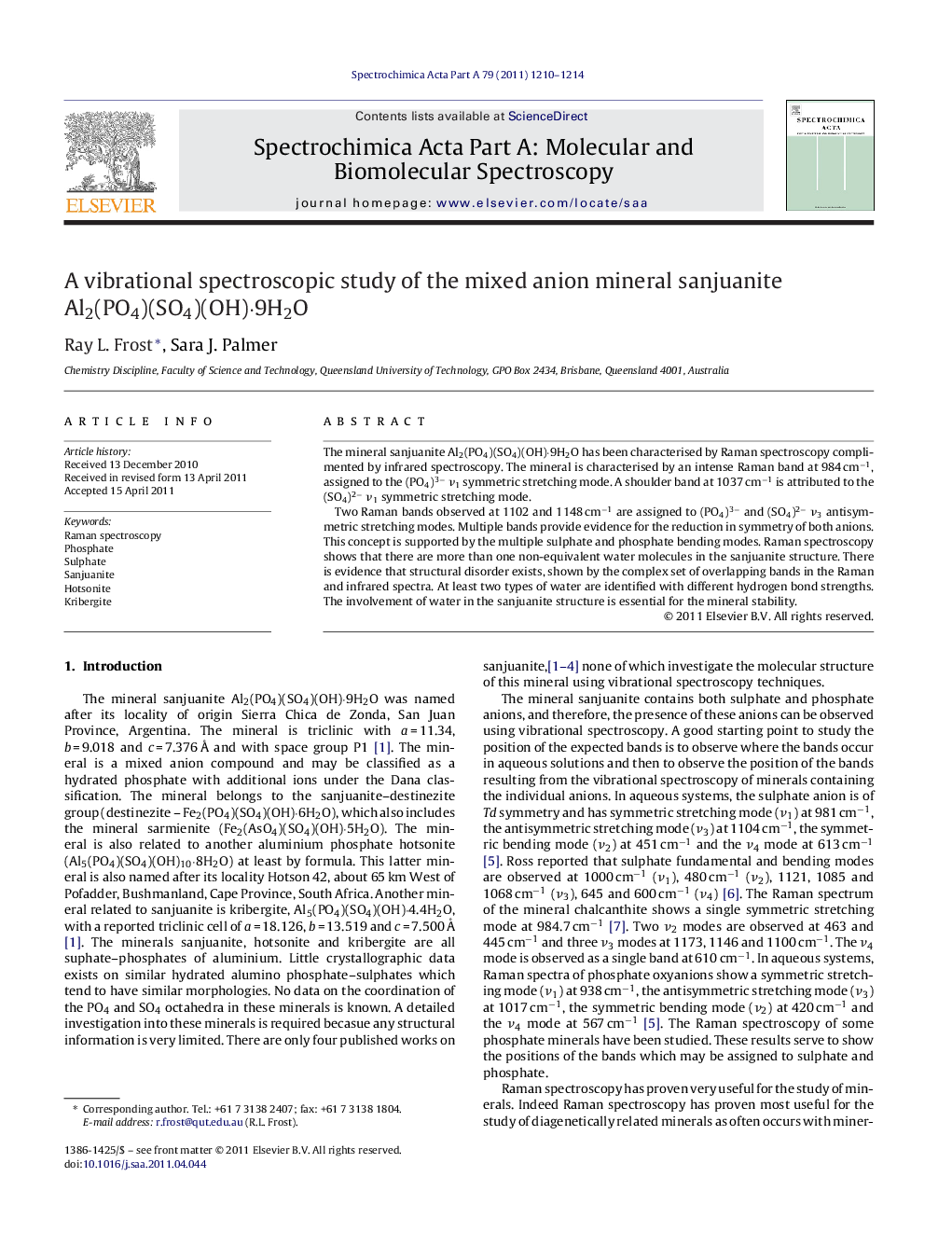| Article ID | Journal | Published Year | Pages | File Type |
|---|---|---|---|---|
| 1236509 | Spectrochimica Acta Part A: Molecular and Biomolecular Spectroscopy | 2011 | 5 Pages |
The mineral sanjuanite Al2(PO4)(SO4)(OH)·9H2O has been characterised by Raman spectroscopy complimented by infrared spectroscopy. The mineral is characterised by an intense Raman band at 984 cm−1, assigned to the (PO4)3− ν1 symmetric stretching mode. A shoulder band at 1037 cm−1 is attributed to the (SO4)2− ν1 symmetric stretching mode.Two Raman bands observed at 1102 and 1148 cm−1 are assigned to (PO4)3− and (SO4)2− ν3 antisymmetric stretching modes. Multiple bands provide evidence for the reduction in symmetry of both anions. This concept is supported by the multiple sulphate and phosphate bending modes. Raman spectroscopy shows that there are more than one non-equivalent water molecules in the sanjuanite structure. There is evidence that structural disorder exists, shown by the complex set of overlapping bands in the Raman and infrared spectra. At least two types of water are identified with different hydrogen bond strengths. The involvement of water in the sanjuanite structure is essential for the mineral stability.
Graphical abstractFigure optionsDownload full-size imageDownload as PowerPoint slideHighlights► Minerals such as sanjuanite function as heavy metal cation collectors. ► Sanjuanite is a multi-anion mineral containing SO42− and PO43− units. ► Multiple bands provide evidence for the reduction in symmetry of both anions. ► At least two types of water are identified with different hydrogen bond strengths. ► There is evidence that structural disorder exists.
